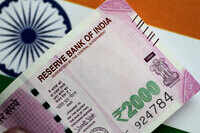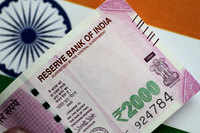Modi’s big challenge may turn into his biggest ally for 2019
TIMESOFINDIA.COM | Updated: Nov 16, 2018, 14:36 ISTHighlights
- Lower oil price also means lower pressure on the rupee as India will need fewer dollars to buy oil
- Centre will have to spend less on subsidising fuel and LPG, oil companies can cut petrol and diesel prices
- Having to allocate less money to oil means higher public resources for other welfare projects and schemes

Among Modi government’s challenges on the economic front today are: fuel prices, rupee, state-run banks, Reserve Bank India, current account deficit, fiscal deficit. All of them may cease to be such big problem areas because of just one factor slowly turning into government’s favour.
Good news
Oil prices have tumbled more than 26% from a four-year high (of $86 a barrel) in October. It has been a dramatic shift of sentiment in just about a month with traders switching from predicting $100 per barrel oil to fearing another supply glut amid dimming demand prospects. US decision to allow Iranian oil shipments to some countries to continue even after the imposition of sanctions, as well as rising American inventories and record output of oil have hit oil prices.
Master key
Falling oil prices will bring down India's import bill (of which oil is a significant chunk) and that's good news for current account deficit (the difference between the value of our imports and exports). If current price trends were to continue, India’s oil import bill in 2018-19 would be much lower than Rs 8.8 lakh crore projected by the oil ministry based on an assumed crude price of $77.88 per barrel and an exchange rate of Rs 72.22 per dollar.
Lower oil price also means lower pressure on the rupee as we will need fewer dollars to buy oil. Centre will spend less on subsidising fuel and LPG prices and oil companies can cut petrol and diesel prices that had till last month been creating daily records. Local prices of petrol and diesel, factor in both international fuel rates as well as currency movements.
An unlikely side effect could be easing of the government’s dispute with Reserve Bank of India, which is about bringing in more money into the system. Since lower fuel prices also lower the risk of inflation, it means increased room for RBI to cut interest rate in future.
Mission 2019
Having to allocate less money to oil means higher public resources for other welfare projects and schemes. Government can always choose not to lower fuel taxes further, which means its revenue tap from oil keeps flowing. That’s good news for politics. At least one report says that government may be planning to roll out goodies in the next year’s budget and not present a boring one as most election-year interim budgets are. The February 1 date of the interim Union Budget may keep the announcements out of the election model code of conduct too.
Good news
Oil prices have tumbled more than 26% from a four-year high (of $86 a barrel) in October. It has been a dramatic shift of sentiment in just about a month with traders switching from predicting $100 per barrel oil to fearing another supply glut amid dimming demand prospects. US decision to allow Iranian oil shipments to some countries to continue even after the imposition of sanctions, as well as rising American inventories and record output of oil have hit oil prices.
Master key
Falling oil prices will bring down India's import bill (of which oil is a significant chunk) and that's good news for current account deficit (the difference between the value of our imports and exports). If current price trends were to continue, India’s oil import bill in 2018-19 would be much lower than Rs 8.8 lakh crore projected by the oil ministry based on an assumed crude price of $77.88 per barrel and an exchange rate of Rs 72.22 per dollar.
Lower oil price also means lower pressure on the rupee as we will need fewer dollars to buy oil. Centre will spend less on subsidising fuel and LPG prices and oil companies can cut petrol and diesel prices that had till last month been creating daily records. Local prices of petrol and diesel, factor in both international fuel rates as well as currency movements.
An unlikely side effect could be easing of the government’s dispute with Reserve Bank of India, which is about bringing in more money into the system. Since lower fuel prices also lower the risk of inflation, it means increased room for RBI to cut interest rate in future.
Mission 2019
Having to allocate less money to oil means higher public resources for other welfare projects and schemes. Government can always choose not to lower fuel taxes further, which means its revenue tap from oil keeps flowing. That’s good news for politics. At least one report says that government may be planning to roll out goodies in the next year’s budget and not present a boring one as most election-year interim budgets are. The February 1 date of the interim Union Budget may keep the announcements out of the election model code of conduct too.
Download The Times of India News App for Latest Business News.










































All Comments ()+^ Back to Top
Refrain from posting comments that are obscene, defamatory or inflammatory, and do not indulge in personal attacks, name calling or inciting hatred against any community. Help us delete comments that do not follow these guidelines by marking them offensive. Let's work together to keep the conversation civil.
HIDE